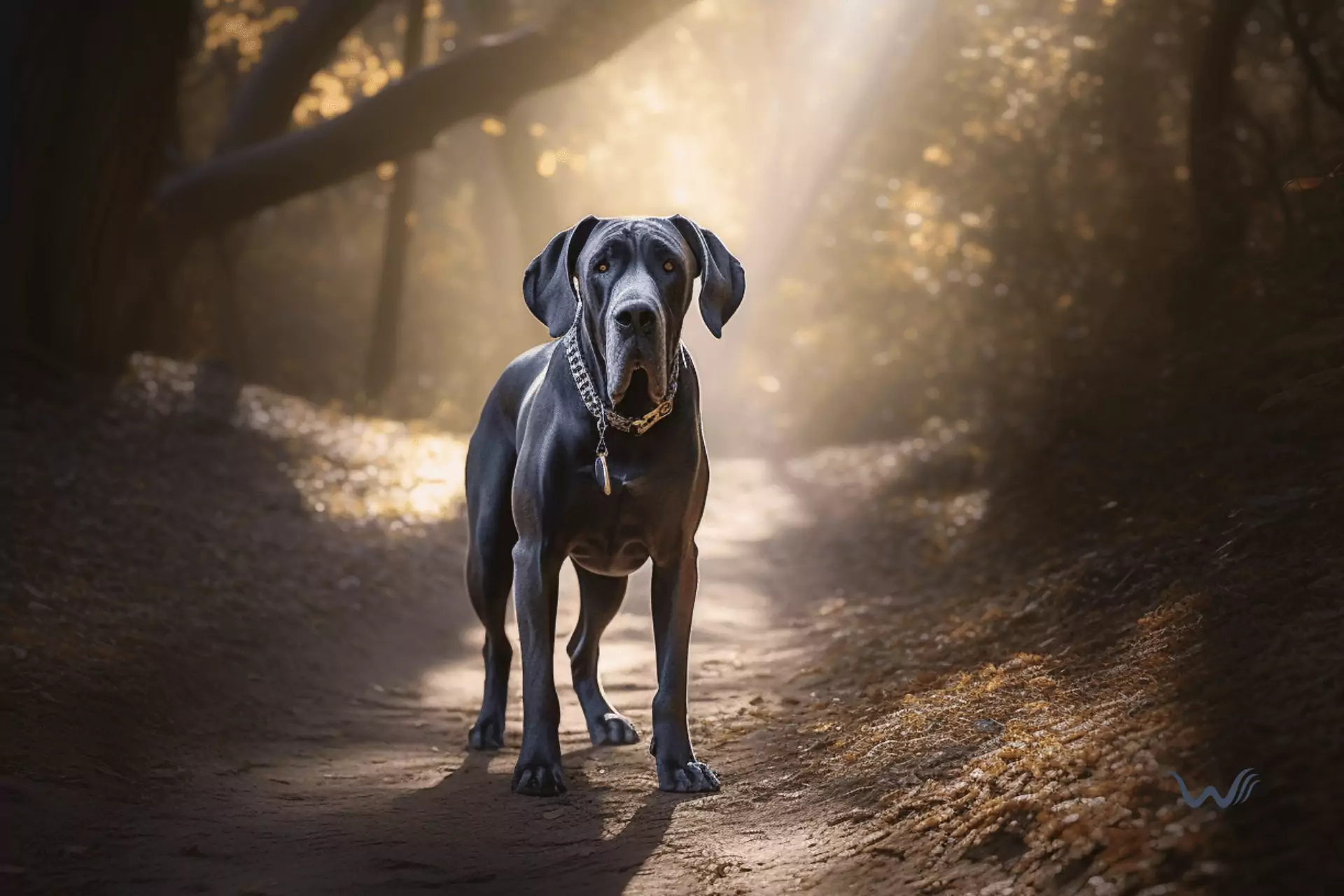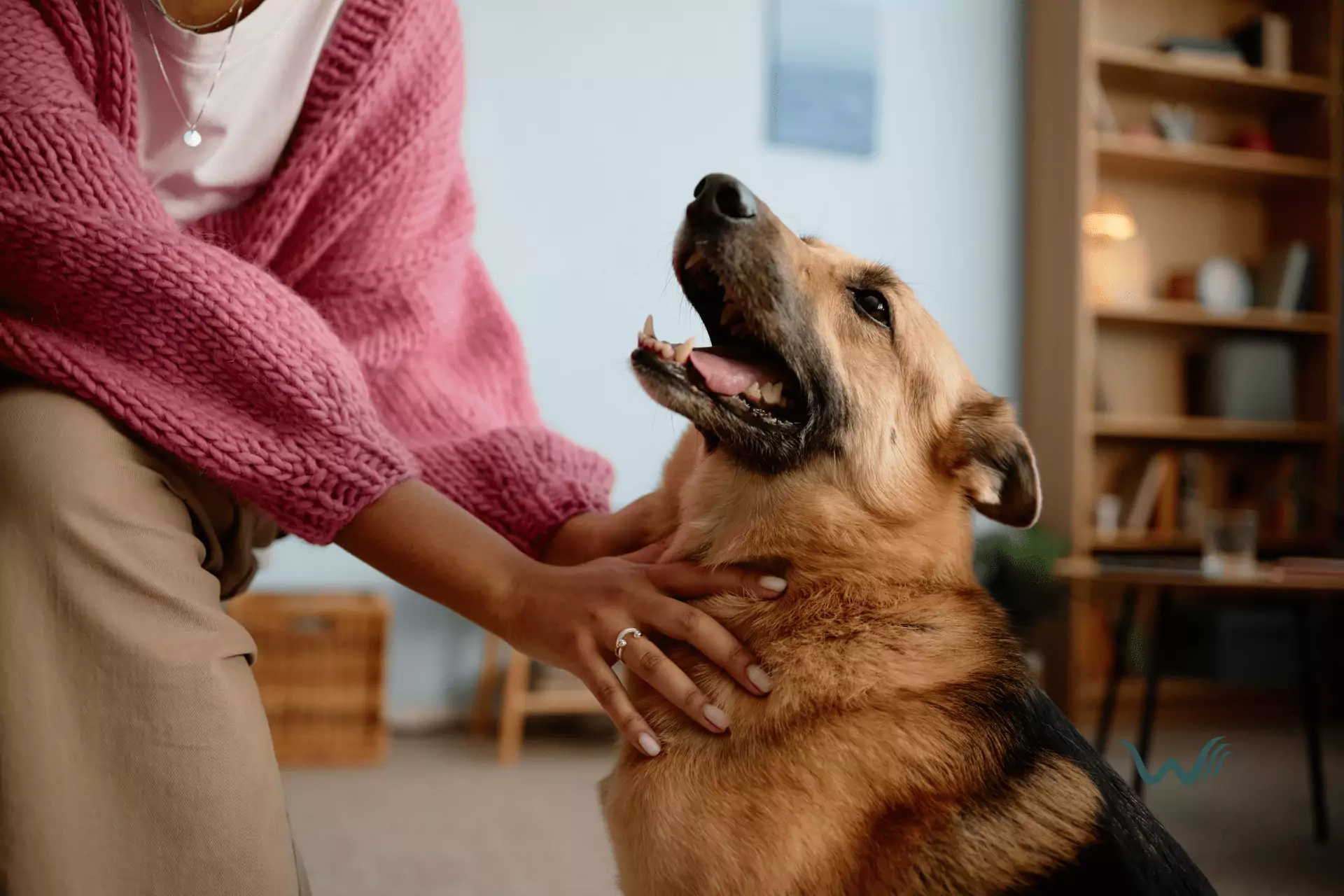

Can A Great Dane Be A Service Dog?
by Haley Mills
Last updated: April 21, 2024
Verified and Approved by:
Angela Morris,
MSW, LCSW
Fact Checked

Service dogs are vital in supporting individuals with disabilities and providing them with the necessary assistance to navigate their daily lives. While commonly associated with smaller breeds like Labrador Retrievers and Golden Retrievers, many people wonder if larger breeds, such as Great Danes, can also serve as service dogs.
In this article, we will explore the requirements for service dog certification, assess a Great Dane’s suitability as a service dog, and discuss the training and socialization needed for them to excel in this role.
Service dogs are highly trained animals that assist individuals with disabilities, such as physical impairments, visual or hearing impairments, psychiatric conditions, or medical issues. These dogs are specifically trained to perform tasks that mitigate the impact of their owner’s disability, allowing them to live more independently and confidently.
Understanding Service Dogs and Their Roles
So, you’re wondering if a Great Dane can be a service dog?
Service dogs are highly trained animals that assist individuals with disabilities in various ways. There are different types of service dogs, each trained to perform specific tasks based on the needs of their handlers. These tasks can range from guiding individuals with visual impairments to alerting individuals with hearing impairments to sounds in their environment.
One common misconception is that service dogs are limited to certain breeds or sizes. However, there is no specific breed or size requirement for a service dog. What matters most is the dog’s ability to perform the necessary tasks and assist their handler effectively. Great Danes can be trained to be excellent service dogs despite their large size. Their size can be advantageous in certain situations, such as providing stability and balance support for individuals with mobility impairments.
Service dogs and their handlers are protected by laws granting them certain rights. In the United States, the Americans with Disabilities Act (ADA) ensures that individuals with disabilities can be accompanied by their service dogs in public places, including restaurants, stores, and transportation services. Service dog handlers are also protected from being denied access or treated differently due to their disability. These legal rights and protections are crucial in allowing individuals with disabilities to fully participate in society with the assistance of their service dogs, regardless of the breed or size of the dog.
Requirements for Service Dog Certification
Service dog certification has specific requirements that must be met for a dog to be recognized as a service dog. The service dog certification process typically involves training the dog to perform specific tasks that assist individuals with disabilities. These tasks can include but are not limited to guiding individuals who are blind or visually impaired, alerting individuals who are deaf or hard of hearing to sounds, pulling a wheelchair, or providing assistance during a medical emergency.
In addition to the training requirements, service dogs must also meet certain behavioral standards. They must be well-behaved and controlled at all times, and they must not exhibit aggressive or disruptive behavior. This is important to ensure the safety and well-being of the handler as well as the general public.
Once a dog has completed the necessary training and has demonstrated the required behavior, they can be eligible for service dog certification. This certification legally recognizes the dog as a service dog and grants certain rights and privileges to the handler. These rights can vary depending on the jurisdiction, but generally include the right to bring the service dog into public places, such as restaurants, stores, and transportation vehicles.
Assessing a Great Dane’s Suitability as a Service Dog
One consideration is the physical limitations of the breed. Great Danes are known for their large size and height, which can pose challenges in certain service dog tasks. For example, if a service dog is required to perform tasks involving agility or climbing, the size and weight of a Great Dane may make it difficult to maneuver or access certain areas.
Their size may also affect their ability to fit comfortably in certain spaces, such as on public transportation or in small rooms. These physical limitations need to be carefully assessed to determine if a Great Dane can effectively perform the tasks required of a service dog.
Another crucial aspect of assessing a Great Dane’s suitability as a service dog is evaluating their temperament. Service dogs need to have a calm and stable temperament, as they will often be working in busy and unpredictable environments. Great Danes are generally known for their gentle and friendly nature, which can be beneficial in many service dog roles.
Be sure to assess the individual temperament of each Great Dane, as not all dogs within the breed may possess the desired traits. Temperament evaluations can help determine if a Great Dane has the necessary traits, such as patience, focus, and adaptability, to perform as a service dog effectively.
Training and Socializing a Great Dane for Service Work
Training and socializing a Great Dane for service work involves building a strong bond and teaching necessary skills. When it comes to training methods for service dogs, positive reinforcement is often the most effective approach. This involves rewarding the dog for desired behaviors, such as following commands or performing tasks. Treats, praise, and play can all be used as rewards to motivate the Great Dane and reinforce good behavior.
Consistency and repetition are key in training, as it helps the dog understand what is expected of them. It is important to start training early and continue it throughout the dog’s life to maintain their skills and behavior.
However, there are unique challenges when socializing a large breed dog like a Great Dane for service work. One challenge is their size. Great Danes can grow to be quite large, which can be intimidating to some people. It is important to socialize the dog in various environments and with different types of people to ensure they are comfortable and well-behaved in any situation.
Additionally, the sheer size of a Great Dane can make certain tasks more difficult. For example, if the dog is being trained to assist with mobility, they need to be able to navigate tight spaces and crowded areas without causing harm to themselves or others. This requires additional training and careful handling to ensure the dog can perform their tasks safely and effectively. A Great Dane can be a successful service dog with proper training and socialization.
Is a Goldendoodle as capable of being a service dog as a Great Dane?
When it comes to goldendoodle service dog suitability, both Goldendoodles and Great Danes can excel at being service dogs. Goldendoodles are known for their intelligence, trainability, and friendly nature, while Great Danes are incredibly gentle giants with a calm and reliable demeanor. Ultimately, the suitability of a service dog depends on the individual dog’s personality and training.
Benefits and Considerations of Having a Great Dane as a Service Dog
One of the main benefits of having a Great Dane as a service dog is their size. Great Danes are one of the largest dog breeds, which can benefit individuals with mobility challenges. Their size and strength make them capable of providing stability and support to their handlers, especially when navigating uneven terrain or stairs.
Great Danes have a calm and gentle temperament, which is essential for a service dog. They’re known for their patience and willingness to work, making them well-suited for tasks such as retrieving items, opening doors, or even providing physical assistance.
Handlers must educate the public about the role and behavior of service dogs, as well as the specific tasks that their Great Dane is trained to perform. By doing so, they can help promote understanding and acceptance, ensuring a positive experience for both the handler and the general public. Additionally, handlers should be prepared to address any questions or concerns, always prioritizing their service dog’s well-being and comfort.
Frequently Asked Questions
What are the legal rights and protections for service dogs and their handlers?
Emotional support animals and service animals have different legal rights and protections. Service dogs provide a range of benefits, including the impact on mental health and well-being. They are trained to perform specific tasks to assist individuals with disabilities.
Can any breed of dog be trained to become a service dog?
Not all dog breeds are suitable for service work. Breed suitability for service dog training depends on temperament, size, and physical abilities. Behavioral requirements, such as trainability and sociability, are essential considerations when selecting a potential service dog candidate.
How long does training a Great Dane to become a service dog typically take?
Training a Great Dane to become a service dog typically takes around 1.5 to 2 years. The training methods for service dogs involve teaching a wide range of tasks and behaviors, which can be challenging for larger breeds due to their size and strength.
Are there any specific health concerns or issues to consider when using a Great Dane as a service dog?
Health considerations for Great Danes as service dogs include their predisposition to certain genetic health issues such as hip dysplasia and bloat. Additionally, their large size can pose mobility and joint health challenges.
Are there any restrictions or limitations on where a service dog can accompany their handler?
There are restrictions on where a service dog can accompany their handler. Public transportation may have limitations, but the Americans with Disabilities Act (ADA) allows service dogs access to public buildings and establishments.
Certify Your Emotional Support Animal Today

Why You Can Rely on Us?
At Wellness Wag, we believe your pet deserves care rooted in both science and compassion. Each article is carefully researched, written in clear language for pet owners, and then reviewed by qualified professionals to ensure the information is evidence-based, current, and practical for real-life care. Our goal is to help you feel confident in making informed decisions about your pet’s health and well-being.
Reviewed by
Angela Morris, MSW, LCSW
Angela is a licensed clinical social worker with 20 years of experience in patient advocacy and community mental health. She has assisted numerous clients with ESA evaluations and brings a deep understanding of disability accommodations, ensuring that all information is accurate, supportive, and practical.

Written by :
Haley Mills
Last Updated :
April 21, 2024












